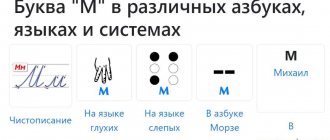Pronunciation of the T sound
We can highlight common mistakes made in the pronunciation of the T sound:
- replacing the sound T (it is front-lingual) with G and K (they are called back-lingual);
- mixing or rearranging consonants located next to the sound T (“rolled” instead of “glass”);
- after P or K, the T sound is lost and replaced with a softening (“piichka” instead of “birdie”);
- replacing the sounds Ch and C with T (“nine” instead of “girl”, “Petsya” instead of “Petya”).
Children who replace the T sound with some other sound often have incorrect articulation. The child raises his tongue to the palate, while the tip of the tongue should rest against the front teeth.
The reasons for incorrect pronunciation are as follows:
- malfunctions of the articulatory apparatus (speech organs);
- the lower jaw is weakly developed, which is why it is inactive during speech;
- the hearing organs are poorly developed, which is why the child cannot distinguish sounds by ear;
- imitating an adult who has problems with correct pronunciation.
Only a speech therapist can make a diagnosis. And parents, in turn, can practice at home the exercises recommended by a professional.
Consonant sounds [t], [t'], letters T, t
There is a beautiful city on the shores of the Black Sea. In this city, on Timiryazev Street, at house 15, live a brother and sister: Tanya and Timur Tikhomirov. Let's get to know each other better.
Hello. My name is Tanya. I am 7 years old and I already go to school.
̶ And my name is Timur. And I'm 7 years old. I also go to school.
Tanya and Timur study in the same class. And today, together with Tanya and Timur, we will get acquainted with the letter T
.
So, let's begin. Tanya's name begins with the sound [t]
, and Timur’s name begins
with the sound [t']
.
Tanya has a tiger cub Tim. These words also have sounds [t]
and
[t']
.
And we remember that all sounds in writing are indicated by letters. So the sounds [t]
and
[t']
in writing are indicated by a capital
letter T
and a small
letter t
. Moreover, all sounds are indicated in square brackets.
Sounds [t]
and
[t']
are
consonant sounds
. Consonant sounds cannot be sung like vowels, and when we pronounce them, our lips, or teeth, or tongue prevent the air from passing freely in the mouth and an obstruction occurs.
Let's try to pronounce the sounds [t]
and
[t']
.
The tongue and teeth prevent you from pronouncing these sounds freely. Which means they are consonant
.
And all consonant sounds can be either hard or soft. And in order to remember better, we made hard sounds blue and pronounced them firmly. For example: in the word sharpener the sound [t]
sounds solid.
And we made soft sounds green and pronounce them softly. For example: in the word eraser, the sound [t']
sounds soft. Moreover, to the soft sound we will add an icon that looks like a comma, which shows that this sound is soft.
And since sounds in writing are indicated by letters, the capital letter T
and the small
letter t
will be denoted in blue-green color. And you must remember that these letters can represent two consonant sounds: hard and soft.
̶ Wow, how interesting. What else can you find out about the letter T?
And all consonant sounds can sound voiced or dull. Listen to how dull the sounds [t] sound
and
[t']
.
The sounds [t], [t']
can only be voiceless.
Also, you must remember that we pronounce and hear sounds, but we see and write letters. Now let's see how these letters are written.
Letter T
can be large (called
capital
) and small (called
lowercase
). A capital letter is always larger than a small letter, and a small letter is always smaller than a large letter.
̶ Oh, how interesting. And we also want to write letters.
Fine. Here's a checkered piece of paper for you. Please color the cells to make the letter t
.
Since the letter t can denote a hard and soft sound, Tanya will first color the letter blue, and then Timur will color it green. To remember better.
So, get started.
Here you go. Everything worked out very well. Well done! We learned to write letters, and now let’s remember in what cases these letters are written. If someone or something is given names, then these names are written with a capital letter
.
People's patronymics and surnames are written
with a capital letter For example: teacher Tatyana Timofeevna.
Animal names are written
with a capital letter For example: the cat Timokh and the bull Tarzan. also with a capital letter
.
And
many other words are written with a small letter
Still with a capital letter
words are written at the beginning of a sentence. For example:
A notebook and pen are school supplies.
̶ Now we'll play a little. I will tell you riddles, and you will guess them. And if you name the answer correctly, a picture will appear in front of you along with the word. So, let's begin.
Tanya, first, I’ll tell you a riddle. Listen carefully.
She dips her braid in paint without fear. Then, with a dyed braid, he drags it across the page in the album.
̶ I know, brush.
Right. Now a mystery for Timur.
I'm in order inside. There are stacks of books and notebooks.
̶ I know too. This is a briefcase.
̶ Next riddle.
What kind of miracle, what kind of box? He himself is a singer and himself a storyteller, and at the same time he demonstrates films.
TV. That's right Tanya. And the last riddle.
I'll turn the magic circle -
And my friend will hear me.
telephone.
̶ Well done Timur.
Now let's think about which words contain the letter t
does it mean hard sound?
̶ Brush and briefcase.
Right. Timur. And now, so as not to forget, we will mark the letter in blue. In all other words the letter t
denotes soft sounds. We will make them green.
And also the letter t
can appear at the beginning of a word, in the middle or at the end.
Well, we got acquainted with the hard sound [t]
and soft
sound [t']
, which in writing are indicated by a capital
letter T
, and a small
letter t
.
And to better remember the letter t
, you can remember a hammer that knocks: “knock-knock”,
the letter t
is a faithful friend.
Well, our lesson is over. See you again!
Articulatory gymnastics for the sound t
It is necessary to do articulation exercises daily. Get used to the fact that in any free time you and your baby develop the speech apparatus.
Setting the T sound
- Choose several syllables or words that contain the letter combination TA, and repeat them at least 10 times.
- Place the tongue between the teeth and press it firmly, but at the same time so that it does not hurt the baby, with the jaw. Take a deep breath and, as you exhale, say an interdental T.
- Place your tongue between your teeth again. Stretch your teeth in a smile and “spit.” After this, give your jaw a rest.
- T is a derivative sound from P. Therefore, you can start warming up by practicing the sound P. Say Pa-Pa several times, while the wide part of the tongue should be pressed to the lower lip. Gradually stretch your lips into a smile and move on to pronouncing Ta-Ta.
- Place the tongue between the teeth. Say Pa-Pa again several times. At this moment, the adult spreads the child’s lips with his index finger and thumb. When the manipulation is performed correctly, Ta-Ta is pronounced.
Sound production
- Talk to the child Ta-Ta.
- A special paddle is used to soften the sound. Use it to press the tip of your tongue and lower it down. You should get the letter combination Tya.
- The sound Th is produced by clicking the tip of the tongue; the teeth should be closed at this time.
- You can complicate the exercise: do not press your tongue against the palate, but stick it out.
profiles
Diagram 1. Sound
And buKVE A
Features of articulation. The mouth is wide open. The lips are calm (not tense or rounded). The tip of the tongue is located at the lower teeth, the tongue is flat. The exhaled air does not meet any obstacles in the mouth. The vocal cords are working, the throat is trembling (there is a voice). Characteristic. The sound [A] is a vowel.
Letter color designation. The letter is colored red.
Scheme 2. Sound I letter O
Features of articulation.
The lips are rounded and pushed forward.
The tip of the tongue moves slightly away from the lower teeth, the back of the tongue is raised. The exhaled air does not meet any obstacles in the mouth. The vocal cords are working, the throat is trembling (there is a voice). Characteristic.
The sound [O] is a vowel.
Letter color designation.
The letter is colored red.
Diagram 3. Sound
And buKVE
U
Features of articulation. The lips are rounded and strongly pushed forward. The tip of the tongue extends from the lower teeth, the back of the tongue is curved. The exhaled air does not meet any obstacles in the mouth. The vocal cords are working, the throat is trembling (there is a voice). Characteristic. The sound [U] is a vowel.
Letter color designation. The letter is colored red.
Scheme 4. Sound I letter Y
Features of articulation. The lips are slightly stretched. The teeth are visible. The tip of the tongue extends from the lower teeth, the back of the tongue is strongly arched. The exhaled air does not meet any obstacles in the mouth. The vocal cords are working, the throat is trembling (there is a voice). Characteristics Sound [Y] - vowel.
Letter color designation. The letter is colored red.
Diagram 6. Sound
And
the letter
P
Features of articulation. The lips are closed and open under the pressure of exhaled air. The tip of the tongue extends slightly from the lower teeth. The tongue is flat.
The vocal cords are resting, the throat is not trembling (no voice). Characteristic. The sound [P] is a hard, voiceless consonant. Letter color designation. The letter is colored blue.
Diagram 7. Sound I letter B
Features of articulation.
The lips are closed and open under the pressure of exhaled air.
The tip of the tongue extends slightly from the lower teeth. The tongue is flat. The vocal cords are working, the throat is trembling (there is a voice). Characteristic.
The sound [B] is a hard voiced consonant.
Letter color designation.
The letter is colored blue.
Diagram 8. Sound I letter T
Features of articulation. The tip of the tongue is pressed against the upper teeth, the back of the tongue is lowered. Under the pressure of exhaled air, the tongue comes off the teeth. The vocal cords are resting, the throat is not trembling (no voice). Characteristics The sound [T] is a hard, voiceless consonant. Letter color designation. The letter is colored blue.
Diagram 9. Sound
And
the letter D
Features of articulation.
The tip of the tongue is pressed against the upper teeth, the back of the tongue is lowered.
Under the pressure of exhaled air, the tongue comes off the teeth. The vocal cords are working, the throat is trembling (there is a voice). Characteristic.
The sound [D] is a hard voiced consonant.
Letter color designation.
The letter is colored blue.
Diagram 10. Sound
And
the letter C
Features of articulation.
The teeth are close together.
The lips are slightly stretched. The tip of the tongue rests on the lower teeth, the back is arched. The vocal cords are resting, the throat is not trembling (no voice). Characteristic.
The sound [S] is a hard, voiceless consonant.
Letter color designation.
The letter is colored blue.
Scheme 11. Sound AND letter 3
Features of articulation.
The teeth are close together.
The lips are slightly stretched. The tip of the tongue rests on the lower teeth, the back is arched. The vocal cords are working, the throat is trembling (there is a voice). Characteristic.
Sound [3] is a hard voiced consonant.
Letter color designation.
The letter is colored blue.
Diagram
12. Sound I letter
K
Features of articulation.
The tip of the tongue extends slightly from the lower teeth, the back of the tongue is curved steeply and touches the palate.
Under the pressure of exhaled air, the back of the tongue comes off the palate. The vocal cords are resting, the throat is not trembling (no voice). Characteristic.
The sound [K] is a hard, voiceless consonant.
Letter color designation.
The letter is colored blue.
Diagram 13. Sound
And
the letter G
Features of articulation
The tip of the tongue extends slightly from the lower teeth, the back of the tongue is curved steeply and touches the palate.
Under the pressure of exhaled air, the back of the tongue comes off the palate. The vocal cords are working, the throat is trembling (there is a voice). Characteristic.
The sound [G] is a hard voiced consonant.
Letter color designation.
The letter is colored blue.
Diagram 14. Sound I letter F
Features of articulation.
The lower lip is slightly retracted and pressed against the upper teeth, the upper lip is slightly raised. The upper teeth are visible. The tip of the tongue extends slightly from the lower teeth, the tongue is flat. The exhaled air breaks into the gap between the upper teeth and lower lip. The vocal cords are resting, the throat is not trembling (no voice).
Characteristic.
The sound [F] is a hard, voiceless consonant.
Letter color designation.
The letter is colored blue.
Diagram 15. Sound
And
the letter B
Features of articulation. The lower lip is slightly retracted and pressed against the upper teeth, the upper lip is slightly raised. The upper teeth are visible. The exhaled air breaks into the gap between the upper teeth and lower lip. The vocal cords are working, the throat is trembling (there is a voice). Characteristic. The sound [B] is a hard voiced consonant. Letter color designation. The letter is colored blue.
Diagram 16. Sound
And the letter Ш
Features of articulation.
The lips are pushed forward and rounded. The tip of the tongue is raised towards the front of the palate, but does not touch it. The lateral edges of the tongue are pressed against the upper molars. The back of the tongue is raised. The shape of the tongue resembles a cup.
The vocal cords are resting, the throat is not trembling (no voice). Characteristic.
The sound [Ш] is always a hard, voiceless consonant.
Letter color designation.
The letter is colored blue.
Diagram 17. Sound
And
the letter Z
Features of articulation. The lips are pushed forward and rounded. The tip of the tongue is raised towards the front of the palate, but does not touch it. The lateral edges of the tongue are pressed against the upper molars. The back of the tongue is raised. The shape of the tongue resembles a cup.
The vocal cords are working, the throat is trembling (there is a voice). Characteristic. The sound [Zh] is always a hard voiced consonant. Letter color designation. The letter is colored blue.
Diagram 18. Sound I letter Ch
Features of articulation.
The lips are slightly pushed forward and rounded. The tip of the tongue touches the palate (behind the tubercles). The lateral edges of the tongue are pressed tightly against the upper molars. The back of the tongue is raised. Under the pressure of exhaled air, the tip of the tongue comes off the palate. The vocal cords are resting, the throat is not trembling (no voice).
Characteristic.
The sound [H] is always a soft, dull consonant.
Letter color designation.
The letter is colored green.
Diagram 19. Sound I letter Ш
Features of articulation.
The lips are slightly pushed forward and rounded. The tip of the tongue is raised to the cusps behind the upper teeth. The lateral edges of the tongue are pressed tightly against the upper molars. The back of the tongue is raised. The tongue is tense. The vocal cords are resting, the throat is not trembling (no voice).
Characteristic.
The sound [Ш] is always a soft, voiceless consonant.
Letter color designation.
The letter is colored green.
Diagram 20. Sound I letter C
Features of articulation.
Initially, the back of the tongue is sharply curved and touches the tubercles behind the upper teeth, the tip of the tongue rests on the lower teeth.
Then the back of the tongue lowers to the position occupied when pronouncing the sound [C], and the tip of the tongue remains in place. The vocal cords are resting, the throat is not trembling (no voice). Characteristic.
The sound [Ц] is always a hard, voiceless consonant.
Letter color designation.
The letter is colored blue.
Diagram 21. Sound I letter M
Features of articulation. The lips are closed and do not open, the exhaled air passes through the nose. The tip of the tongue extends slightly from the lower teeth, the tongue is flat.
The vocal cords are working, the throat is trembling (there is a voice). Characteristic. The sound [M] is a hard voiced consonant. Letter color designation. The letter is colored blue.
Diagram 22. Sound I letter N
Features of articulation.
The tip of the tongue is pressed against the upper teeth, the back of the tongue is lowered.
The exhaled air passes through the nose. The vocal cords are working, the throat is trembling (there is a voice). Characteristic.
Sound (Н] - a hard voiced consonant.
Letter designation by color.
The letter is colored blue.
Diagram 23. Sound
And buKVE X
Features of articulation.
The tip of the tongue moves slightly away from the lower teeth, the back of the tongue is curved steeply.
The vocal cords are resting, the throat is not trembling (no voice). Characteristic.
The sound [X] is a hard voiceless consonant.
Letter color designation.
The letter is colored blue.
Diagram 24. Sound
And the letter L
Features of articulation.
The tip of the tongue rests on the upper teeth or on the cusps behind the upper teeth. The middle part of the back of the tongue is lowered, the back of the back of the tongue is raised, the lateral edges of the tongue are lowered. The shape of the tongue resembles a saddle. The exhaled air passes along the sides of the tongue. The vocal cords are working, the throat is trembling (there is a voice).
Characteristic.
The sound [L] is a hard voiced consonant.
Letter color designation.
The letter is colored blue.
Diagram 25. Sound
And
the letter P
Features of articulation.
The tip of the tongue touches the cusps behind the upper teeth.
The lateral edges of the tongue are pressed against the upper molars. The shape of the tongue resembles a spoon. The tip of the tongue trembles under the pressure of exhaled air. The vocal cords are working, the throat is trembling (there is a voice). Characteristic.
The sound
[R]
is a hard voiced consonant.
Letter color designation.
The letter is colored blue.
Diagram 26. Sound [YA]
And
the letter I
Features of sound articulation
[Y]. The lips are stretched into a smile. The teeth are visible. The tip of the tongue is pressed against the lower teeth, the back of the tongue is curved steeply.
The vocal cords are working, the throat is trembling (there is a voice).
Features of sound articulation [A].
The mouth is wide open. The lips are calm (not tense or rounded). The tip of the tongue is located at the lower teeth, the tongue is flat.
The exhaled air does not meet any obstacles in the mouth. The vocal cords are working, the throat is trembling (there is a voice).
Characteristic.
The sound [YA] is a vowel.
Letter color designation.
The letter is colored red.
Diagram 27. Sound [YO]
And buKVE E
Features of sound articulation
[Y]. The lips are stretched into a smile. The teeth are visible. The tip of the tongue is pressed against the lower teeth, the back of the tongue is curved steeply. The vocal cords are working, the throat is trembling (there is a voice).
Features of sound articulation [O].
The lips are rounded and pushed forward. The tip of the tongue moves slightly away from the lower teeth, the back of the tongue is raised. The exhaled air does not meet any obstacles in the mouth. Vocal cords work, throat trembles (there is a voice)
Characteristic.
The sound [YO] is a vowel.
Letter color designation.
The letter is colored red.
Diagram 28. Sound [YU] AND letter
Features of sound articulation
[Y]. The lips are stretched into a smile. The teeth are visible. The tip of the tongue is pressed against the lower teeth, the back of the tongue is curved steeply.
The vocal cords are working, the throat is trembling (there is a voice).
Features of sound articulation [U].
The lips are rounded and strongly pushed forward. The tip of the tongue extends from the lower teeth, the back of the tongue is curved.
The exhaled air does not meet any obstacles in the mouth. The vocal cords are working, the throat is trembling (there is a voice).
Characteristic.
The sound [YU] is a vowel.
Letter color designation.
The letter is colored red.
Diagram 29. Sound
And
the letter I
Features of articulation.
The lips are stretched into a smile.
The teeth are visible. The tip of the tongue is pressed against the lower teeth, the back of the tongue is strongly arched. The exhaled air does not meet any obstacles in the mouth. The vocal cords are working, the throat is trembling (there is a voice). Characteristic.
The sound [I] is a vowel.
Letter color designation.
The letter is colored red.
Scheme zo. Sound [Y E] and letter E
Features of sound articulation
[Y]. The lips are stretched into a smile. The teeth are visible. The tip of the tongue is pressed against the lower teeth, the back of the tongue is curved steeply.
The vocal cords are working, the throat is trembling (there is a voice).
Features of sound articulation [E].
The lips are stretched into a smile. The tip of the tongue is located at the lower teeth, the back of the tongue is raised.
The exhaled air does not meet any obstacles in the mouth. The vocal cords are working, the throat is trembling (there is a voice).
Characteristic.
The sound [YE] is a vowel.
Letter color designation.
The letter is colored red.
Diagram 31. Sound [P']
Features of articulation.
The lips are closed and open under the pressure of exhaled air. The tip of the tongue is pressed against the lower teeth, the back of the tongue is arched. The vocal cords are resting, the throat is not trembling (no voice).
Characteristic.
The sound [P'] is a soft, voiceless consonant.
Letter color designation.
The letter is colored green.
Diagram 32. Sound
[B ' ]
Features of articulation.
The lips are closed and open under the pressure of exhaled air.
The tip of the tongue is pressed against the lower teeth, the back of the tongue is arched. The vocal cords are working, the throat is trembling (there is a voice). Characteristic.
The sound [B'] is a soft voiced consonant.
Letter color designation.
The letter is colored green.
Diagram 33. Sound [T']
Features of articulation. The tip of the tongue rests on the lower teeth, the back of the tongue is curved into a steep hill and is pressed with the front part against the tubercles behind the upper teeth. Under the pressure of exhaled air, the front part of the tongue comes off the tubercles.
The vocal cords are resting, the throat is not trembling (no voice). Characteristic. The sound [G] is a soft, dull consonant. Letter color designation. The letter is colored green.
Features of articulation.
The tip of the tongue rests on the lower teeth, the back of the tongue is curved into a steep hill and is pressed with the front part against the tubercles behind the upper teeth. Under the pressure of exhaled air, the front part of the tongue comes off the tubercles.
The vocal cords are working, the throat is trembling (there is a voice). Characteristic.
The sound [D'] is a soft voiced consonant.
Diagram 34. Sound
[D'] Letter color designation.
The letter is colored green.
Diagram 35. Sound
[С']
Features of articulation.
The teeth are close together.
The lips are stretched into a smile. The tip of the tongue rests on the lower teeth, the back of the tongue is arched. The vocal cords are resting, the throat is not trembling (no voice). Characteristic.
The sound [С'] is a soft, voiceless consonant.
Letter color designation.
The letter is colored green.
Diagram 36. Sound [3′]
Features of articulation.
The teeth are close together.
The lips are stretched into a smile. The tip of the tongue rests on the lower teeth, the back of the tongue is arched. The vocal cords are working, the throat is trembling (there is a voice). Characteristic.
The sound [3′] is a soft voiced consonant.
Letter color designation.
The letter is colored green.
Diagram 37. Sound
[K']
Features of articulation.
The tip of the tongue is pressed against the lower teeth. The back of the tongue is curved steeply and touches the palate. Under the pressure of exhaled air, the back of the tongue comes off the palate.
The vocal cords are resting, the throat is not trembling (no voice). Characteristic.
The sound [K'] is a soft, voiceless consonant.
Letter color designation.
The letter is colored green.
Diagram 38. Sound
[G']
Features of articulation.
The tip of the tongue is pressed against the lower teeth.
The back of the tongue is curved steeply and touches the palate. Under the pressure of exhaled air, the back of the tongue comes off the palate. The vocal cords are working, the throat is trembling (there is a voice). Characteristic.
The sound [G'] is a soft voiced consonant.
Letter color designation.
The letter is colored green.
Diagram 39. Sound
[F']
Features of articulation.
The lower lip is slightly retracted and pressed against the upper teeth, the upper lip is slightly raised. The upper teeth are visible. The tip of the tongue is pressed against the lower teeth, the back of the tongue is arched. The exhaled air breaks into the gap between the upper teeth and lower lip. The vocal cords are resting, the throat is not trembling (no voice).
Characteristic.
The sound [F'] is a soft, voiceless consonant.
Letter color designation.
The letter is colored green.
Diagram 40. Sound [B']
Features of articulation. The lower lip is slightly retracted and pressed against the upper teeth, the upper lip is slightly raised. The upper teeth are visible. The tip of the tongue is pressed against the lower teeth, the back of the tongue is arched. The exhaled air breaks into the gap between the upper teeth and lower lip. The vocal cords are working, the throat is trembling (there is a voice).
Characteristics Sound [B'] is a soft voiced consonant.
Letter color designation. The letter is colored green.
Diagram 41. Sound
[ M ' ]
Features of articulation. The lips are closed and do not open, the exhaled air passes through the nose. The tip of the tongue is pressed against the lower teeth, the back of the tongue is arched. The vocal cords are working, the throat is trembling (there is a voice).
Characteristic. The sound [M'] is a soft voiced consonant. Letter color designation. The letter is colored green.
Diagram 42. Sound [Н' ]
Features of articulation. The tip of the tongue rests on the lower teeth, the back of the tongue is curved into a steep hill and is pressed with the front part against the tubercles behind the upper teeth. The exhaled air passes through the nose. The vocal cords are working, the throat is trembling (there is a voice). Characteristics The sound [Н'] is a soft voiced consonant. Letter color designation. The letter is colored green.
Diagram 43. Sound [L']
Features of articulation.
The lips are stretched into a smile. The front of the tongue touches the cusps behind the upper teeth. The middle part of the back of the tongue is raised. The back of the back of the tongue is lowered. The tongue is tense. The exhaled air passes along the sides of the tongue.
Speech therapy exercises
It is necessary to work on overall articulation and clarity of speech. For this, simple and interesting speech therapy complexes are used. We present one of these to your attention.
- “Brushing our teeth.” Stretch your lips in a smile, mouth slightly open. Use your tongue to walk alternately over the upper and lower teeth from the back side. Move from left to right and then in the opposite direction.
- "Spatula". Smile again with your mouth slightly open. Place the wide part of your tongue on your lower lip. Stay in this position for 10 seconds. You can start with 5 seconds.
- “Tube”. Extend your tongue as much as possible and tense it. Then, if possible, roll it up into a tube and stay in this position for 5-10 seconds.
- "Swing". Open your mouth slightly and press the wide part of your tongue against your lower teeth. Then raise your tongue to your upper teeth. We linger in each position for 2-3 seconds. In this case, you need to press with maximum force.
- "Slide". Starting position – mouth slightly open. Press the tip of your tongue firmly against the bottom row of teeth. Then, without lifting the tip, press with the wide part of your tongue (it should bend as if). Stay in this position for 5 seconds.
- "Mountain Wind" Place your tongue in the position described in the previous exercise and blow as hard as possible. In this case, the entire speech apparatus should be tense.
Training articulation
Articulation of the sound T. In the starting position, the lips should be slightly open, the gap between the rows of teeth should be 5 mm. The tip of the tongue is pressed against the upper alveoli (the recesses in the jaws where the tooth roots are located), closing with them, while the vowels A, O, U, Y are pronounced. When performing the exercise, the soft palate rises, the laryngeal folds open, and the air flow has a jerky character.
Articulatory gymnastics for producing the sound TH. The exercise is performed silently; there should be no vibration or shaking of the ligaments. Use the tip of your tongue to touch the bottom row of teeth. Its upper part in this position should be convex, leaning in front against the tubercles behind the upper row of teeth. When exhaling, the air flow should lift the tongue away from the tubercles.
Setting the sound t when replacing with k
- First you need to teach your baby to distinguish between these two sounds. To do this, you can give pictures, the images in which begin with the sounds T or K, and also pronounce such words out loud. Ask the child to distribute into groups (K and T).
- Game “Catch the Sound”. The adult pronounces a small series of letter combinations, and the child must clap his hands when he hears the given sound.
- We are looking for the sound K. Dar-ra-ko-so. Sa-lo-ku-we. Am-da-ka-he ku-ro-lo-ky
- We are looking for the sound T. Ba-ta-do. Na-la-to. Ash-bo-ot. Ju-fu-fu.
Setting the t sound for dysarthria
At the very beginning, you need to pay attention to warming up the tongue and removing tone, as well as general gymnastics for the speech apparatus. For this purpose, the speech therapy exercises listed above are used.
- Raise and lower your tongue, turn right and left. In this case, the tongue is extended as much as possible.
- Then the adult invites the child to tap his tongue on the upper palate (the sound should be T).
- To obtain a soft consonant, the tongue is pressed harder against the palate and moves out more between the teeth. At the same time, the passage for air is reduced.
- To practice the T sound, it is pronounced between two vowels (at least 10 repetitions).
- The baby must cluck at least 20 times. After this, the task becomes more complicated: you need to click while exhaling, not while inhaling.
- The child is asked to place his palm on his larynx. After this, pronounce the sounds T and D. Focus on the difference in vibrations during the pronunciation of the sounds T and D.
Making the sound “T” step by step
The classic methods of correctional work in speech therapy are the preparatory stage, sound production, its automation and differentiation.
Preparatory stage
At the preparatory stage, an articulatory warm-up is carried out to prepare the speech apparatus for work.
Perform the following exercises sequentially:
At this stage, it is also important to do breathing exercises so that when pronouncing a problem sound, you learn to regulate the strength of the air stream:
Introduce your child to the characteristic “T”:
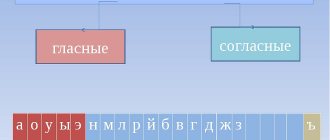
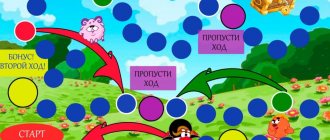
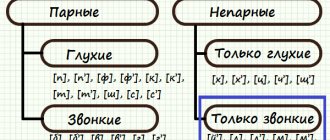
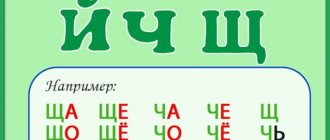


![Pronounce (read) syllables with the sound [L_]](https://ls-kstovo.ru/wp-content/uploads/proiznosit-chitat-slogi-so-zvukom-l_-330x140.jpg)
